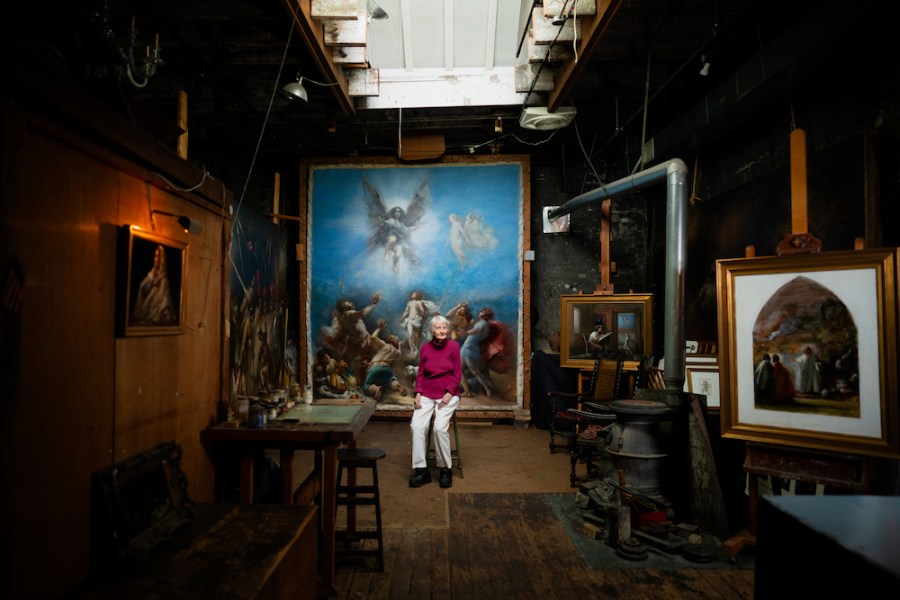It may be hard to imagine today, but New York City was once one of the world’s largest manufacturing hubs. From the 1890s to the 1950s, long before the Prada stores and expensive coffee, lower Manhattan was mostly factories and foundries. Only when globalisation began to push production abroad in the 1960s and ’70s did artists in search of cheap rent move into neighbourhoods such as SoHo and the Bowery, illicitly occupying abandoned factories and turning them into live-work studios.
Documentarian and photographer Joshua Charow came upon these apartments in a similarly clandestine fashion. As an adolescent, Charow dabbled in ‘urban exploration’, illegally sneaking into and exploring buildings. After peering into enough windows that looked like they should belong to factories, but finding artists instead, he learned about the ‘Loft Law’, passed in 1982 to protect artists still living in these factories-turned-lofts from rising rents and eviction.

Curtis Mitchell’s live-work studio in a former ice cream factory in Brooklyn. Photo: © Joshua Charow; courtesy Joshua Charow and Westwood Gallery NYC After obtaining a government-issued list of every remaining protected apartment, Charow spent three years visiting each one and photographed dozens of their inhabitants. The project turned into a book, called Loft Law (published by Damiani), and an exhibition of the same name at New York’s Westwood Gallery, which primarily represents artists from the sorts of neighbourhoo.
















